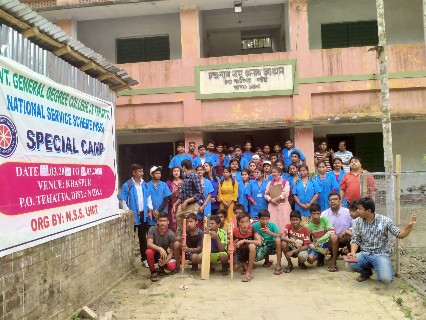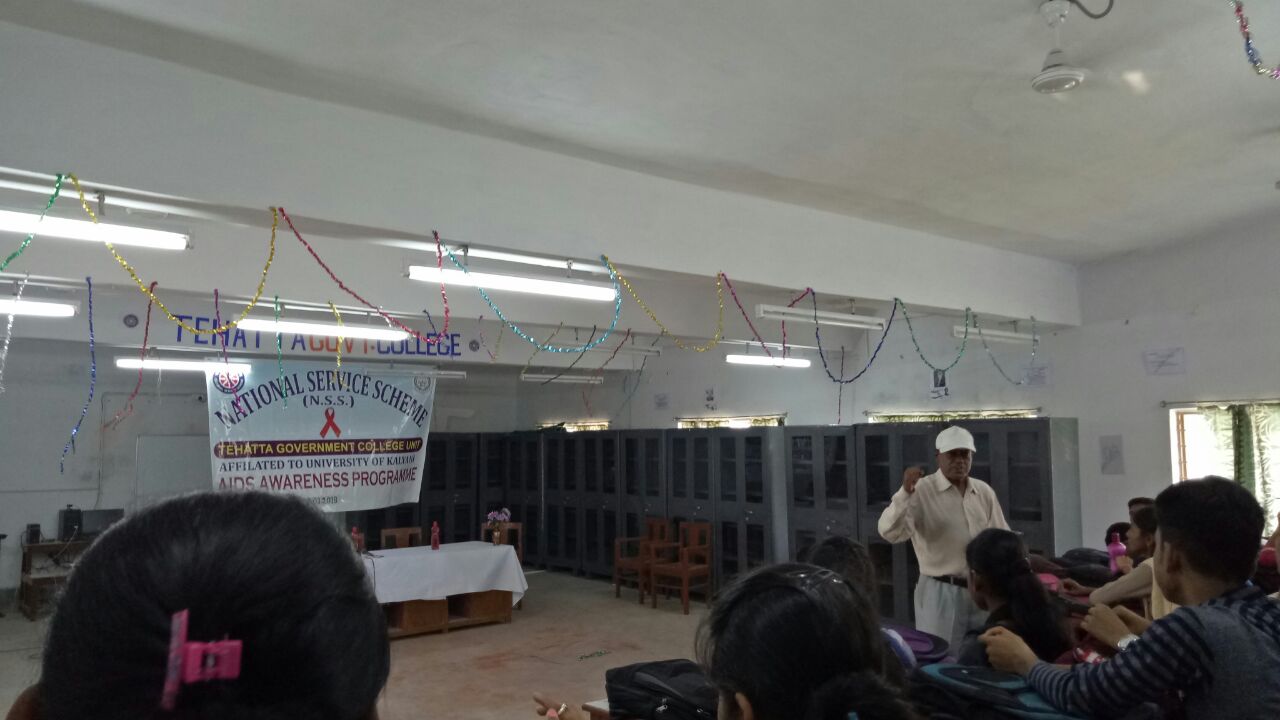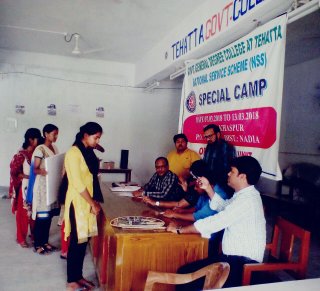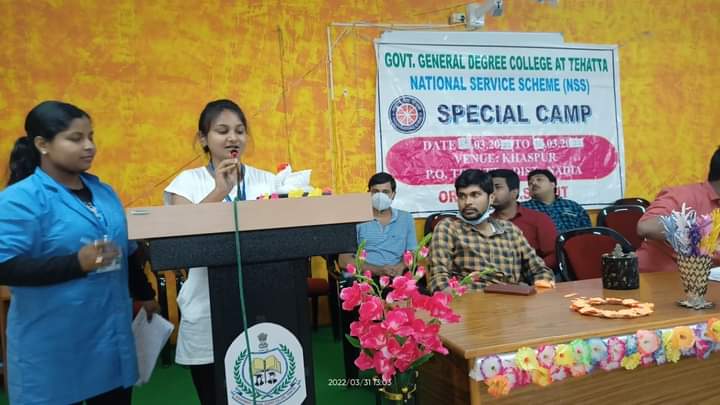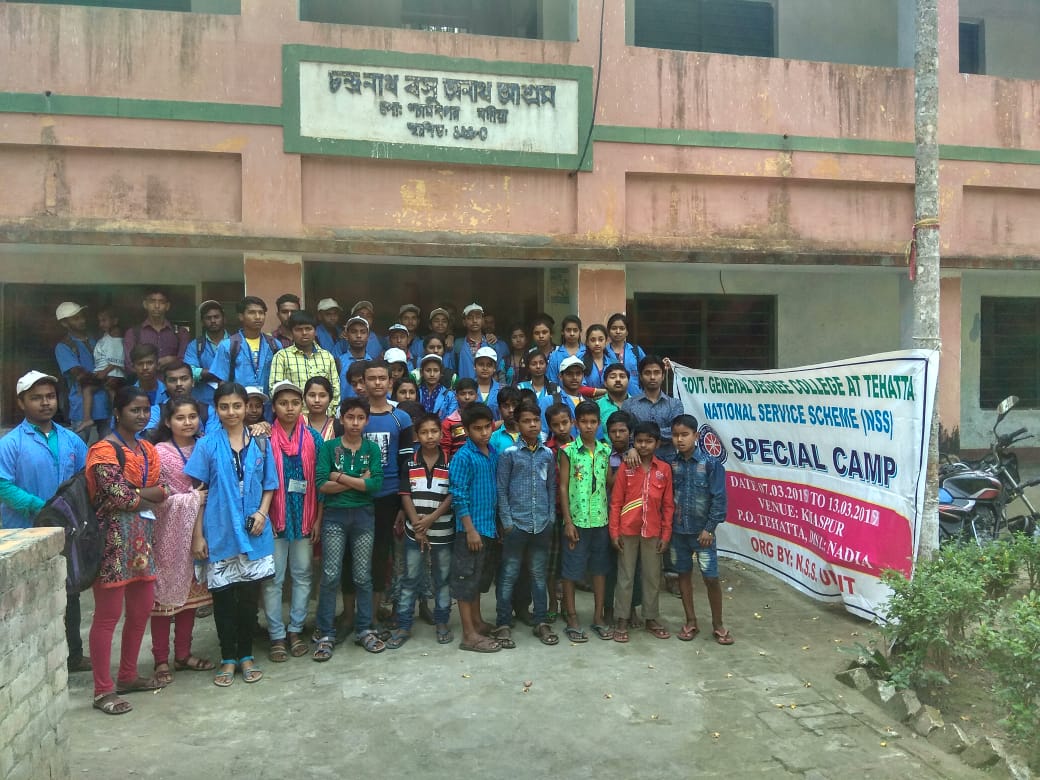National Service Scheme (NSS)
National Service Scheme (NSS)
About the NSS
"The first duty of the students should be, not to treat their period of study as one of the opportunities for indulgence in intellectual luxury, but for preparing themselves for final dedication in the service of those who provided the sinews of the nation with the national goods and services so essential to society.”
– Mahatma Gandhi
History
After independence, the University Grants Commission, headed by S. Radhakrishnan, recommended the introduction of voluntary national service in academic institutions. This idea was again considered by the Central Advisory Board of Education (CABE) at its meeting in January, 1950; after examining the idea and the experiences of other countries in this field, the board recommended that students and teachers should devote time to voluntary manual work. In the draft first Five-Year Plan adopted by the government in 1952, the need for social and labour service by Indian students for one year was stressed. In 1958, Jawaharlal Nehru, in a letter to the chief ministers, considered the idea of social service as a prerequisite for graduation. He directed the Ministry of Education to formulate a suitable scheme for the introduction of national service into academic institutions.
Basic Concepts
The overall aim of National Service Scheme, as envisaged earlier, is to give an extension dimension to the higher education system and orient the student youth to community service while they are studying in an educational institution The reason for the formulation of this objective is the general realization that the College and +2 level students have a tendency to get alienated from the village/slum masses which constitute the majority of the population of the country. The educated youth who are expected to take the reins of administration in future are found to: be unaware of the problems of the village and slum community and in certain cases are indifferent towards their needs and. problems. Therefore it is necessary to arouse the social conscience of the students, and to provide them an opportunity to work with the people in the villages and slums. lt is felt that their interaction with the common villagers and slum dwellers will expose them to the realities of life and bring about a change in their Social perception.
Objectives
The broad objectives of NSS are to:-
- Understand the community in which they work;
- Understand themselves in relation to their community;
- Identify the needs and problems of the Community and involve them in Problem solving process;
- Develop among themselves a sense of social and civic responsibility;
- Utilize their knowledge in finding practical solutions to individual-and Community problems;
- Develop competence required for group-living and sharing of responsibilities.
- Gain skills in the mobilising community participation;
- Acquire leadership qualities and democratic attitude;
- Develop capacity to meet emergencies and ‘natural disasters and practice national integration and social harmony.
The Motto
The motto or watchword of the National Service Scheme is 'NOT ME BUT YOU. This reflects the essence of democratic living and upholds the need for selfless service and appreciation of the other person's point of View and also to show consideration for fellow human beings. It underlines that the welfare of an individual is ultimately dependent on the welfare of society on the whole. Therefore, it should be the aim of the, NSS to demonstrate this motto in its day-to-day programme.
Nss Symbol
The symbol of the National Service Scheme, as appearing on the cover page of this Manual is based on the 'Rath' wheel of the Konark Sun Temple situated in Orissa. These giant wheels of the Sun Temple portray the cycle of creation, preservation and release, and simplify the movement in life across time and space. The design of the symbol, a simplified form of the Sun-chariot wheel primarily depicts movement. The wheel signifies the progressive cycle of life. It stands for continuity as well as change and implies the continuous striving of NSS for social transformation and upliftment.
Nss Badge
The NSS symbol is embossed on the NSS badge. The NSS volunteers wear it white undertaking any programme of community service. The Konark wheel in the symbol has eight bars which represent the 24 hours of the day. Hence, the badge, reminds the wearer, to be in readiness for service of the nation round the Clock i.e. for 24 hours. The Aed colour in the badge indicates that the NSS volunteers are full of blood i.e. lively, active energetic and full of high spirit. The navy blue colour indicates the cosmos of which the NSS is a tiny part, ready to contribute its share for the welfare of mankind.
Nss Day
On September 24, 1969, the then Union Education Minister Dr. V.K.R.V. Rao, launched the NSS program in 37 University covering all states and simultaneously requested the Chief Ministers of States for their cooperation and help. It was appreciate that the programme was started during the Gandhi Centenary Year as it, was Gandhiji who inspired the Indian youth to participate in the movement for Indian Independence and the social uplift of the down-trodden masses of our nation. Therefore, 24 September is celebrated every year as NSS Day with appropriate programmes and activities.
Programme Officer / Co-Ordinator
Programm OfficerActivity
Activity NssReports
| SL.No. | Academic Year | Reports |
|---|---|---|
| 1 | 2018-19 | View/download |
| 2 | 2019-20 | View/download |
| 3 | 2020-21 | View/download |
| 4 | 2021-22 | View/download |
| 5 | 2022-23 | View/download |




